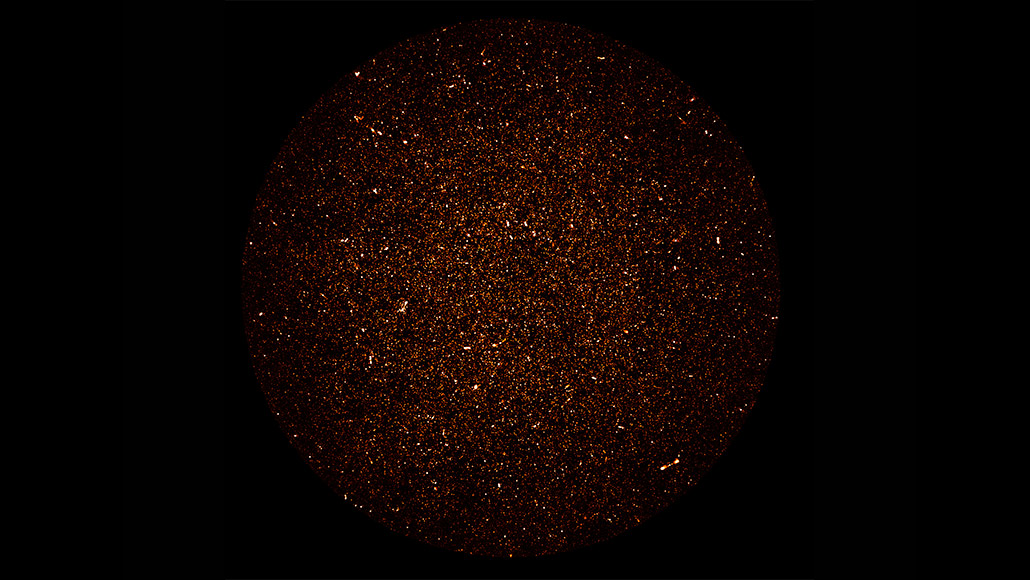A new map reveals radio waves from tens of thousands of galaxies
The picture lifts a veil on the history of star formation in the universe

In this image from a small patch of sky in the Southern Hemisphere, nearly every point of light is radio emission from a galaxy that’s churning out stars. The handful of hourglass-shaped blobs are fountains of gas spewing away from supermassive black holes in the centers of some galaxies.
SARAO, NRAO, AUI, NSF







